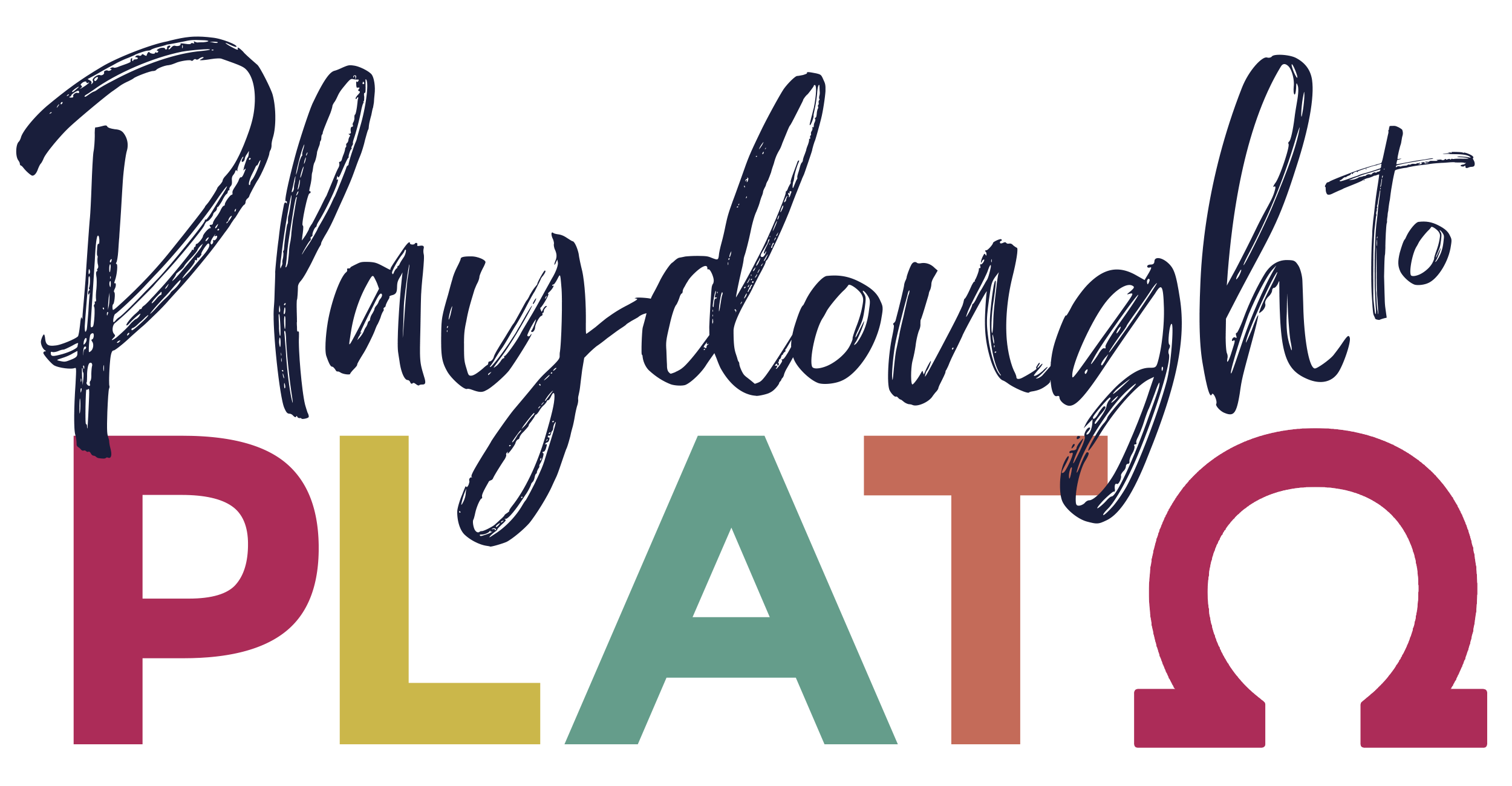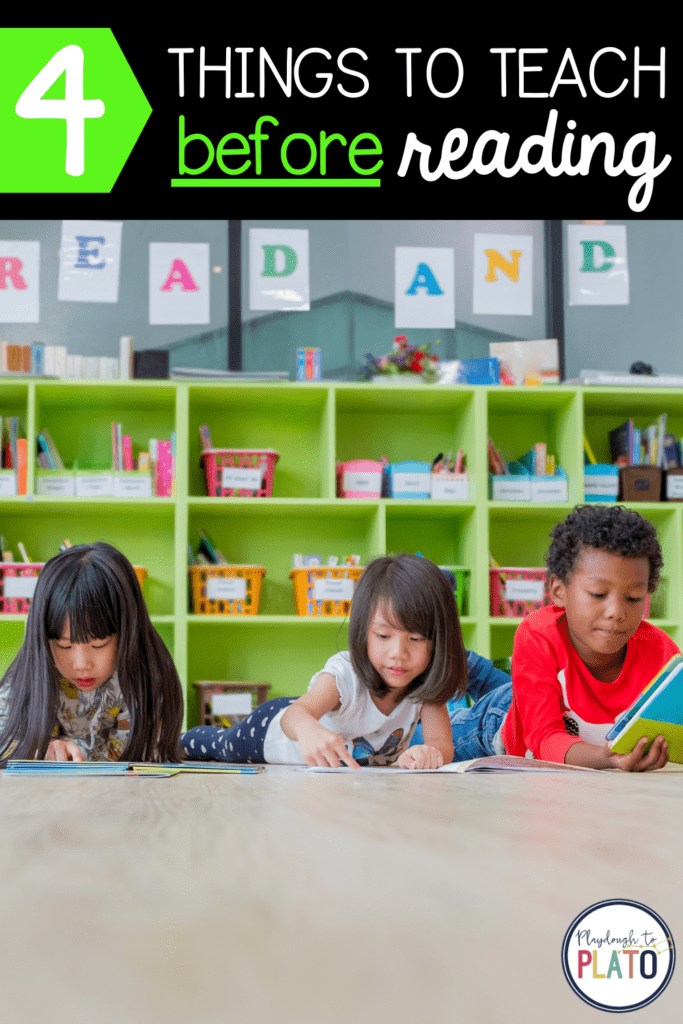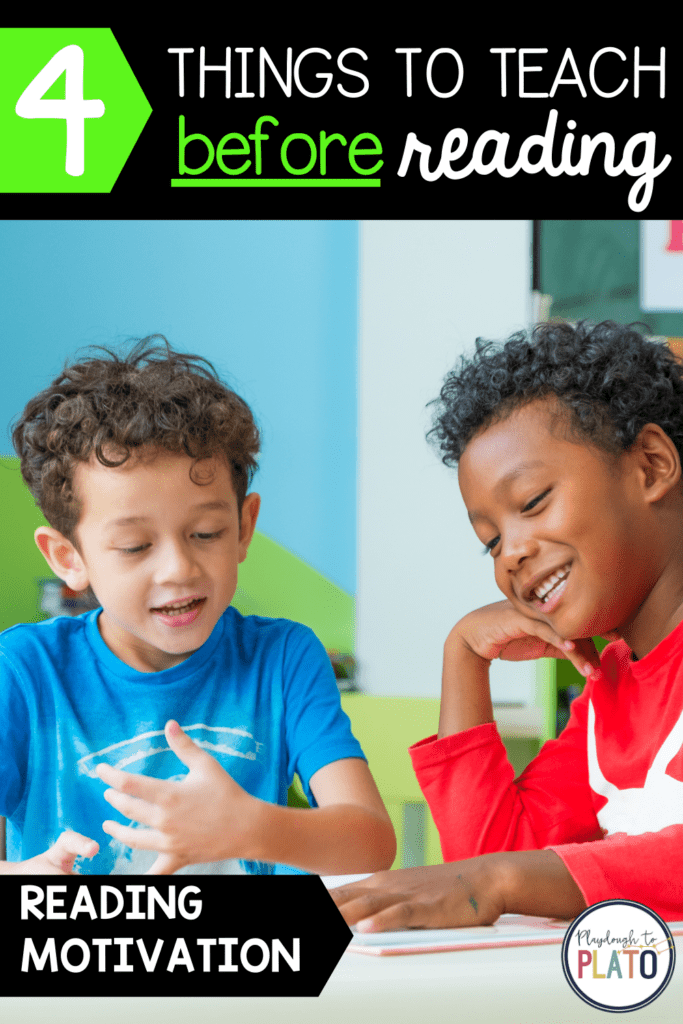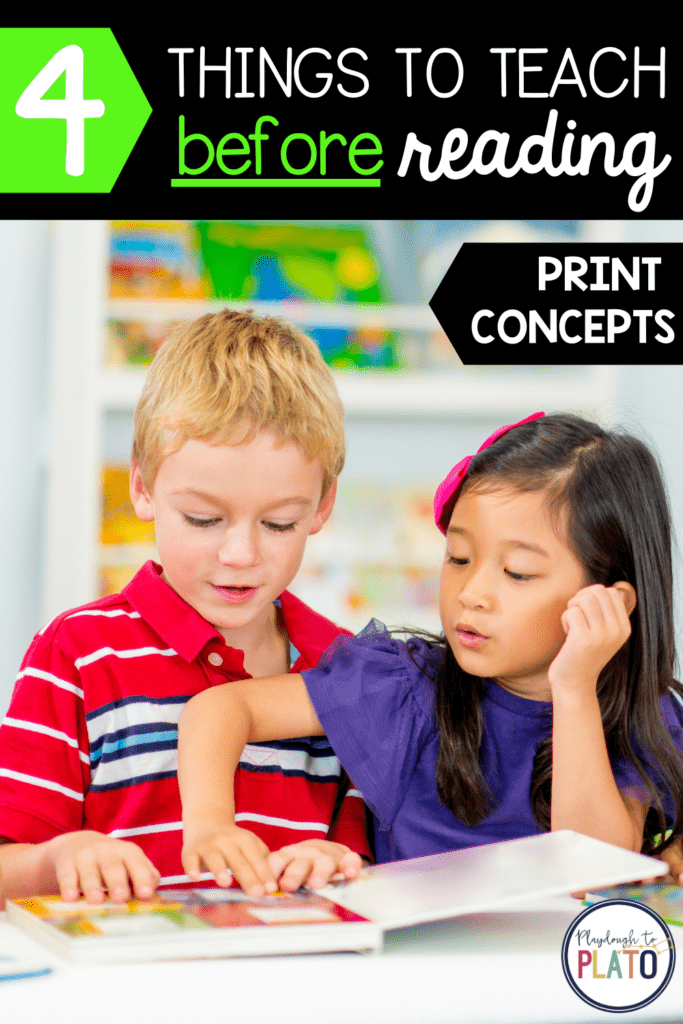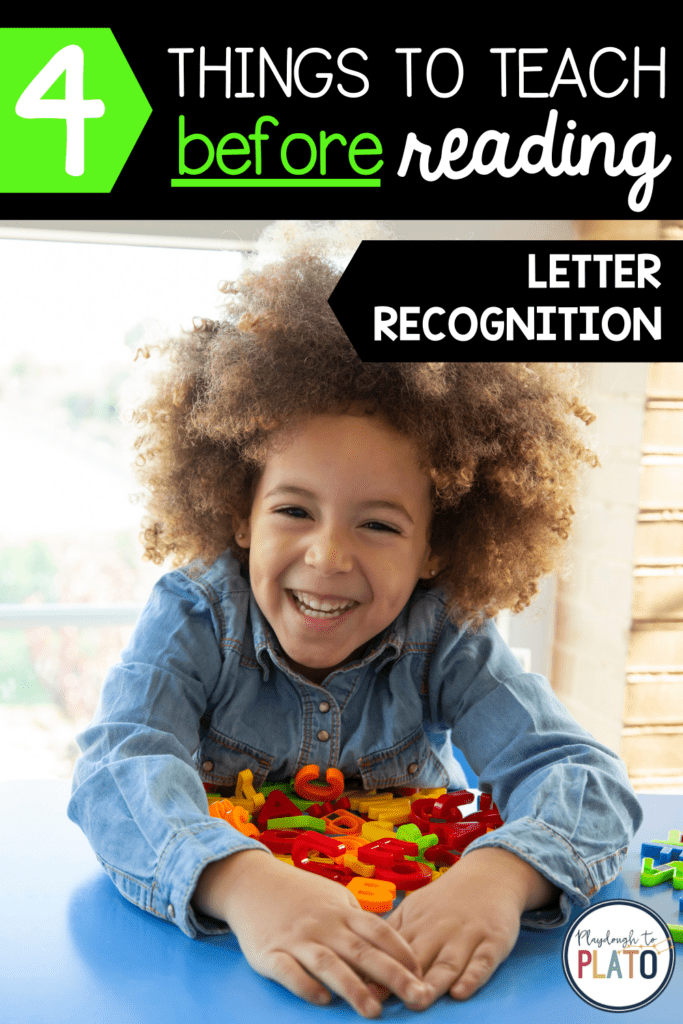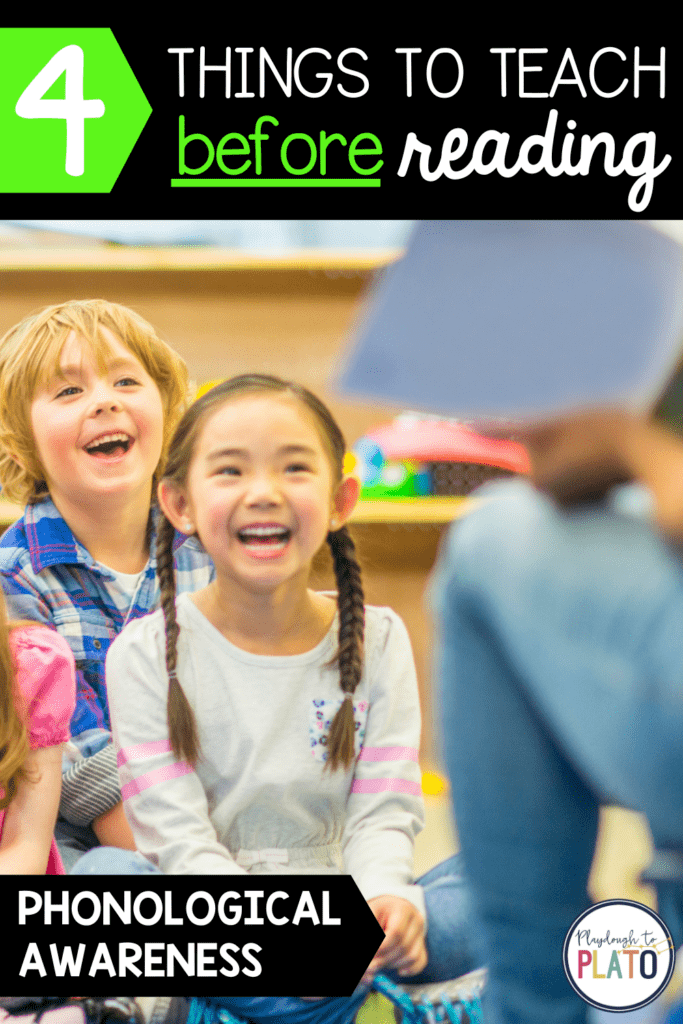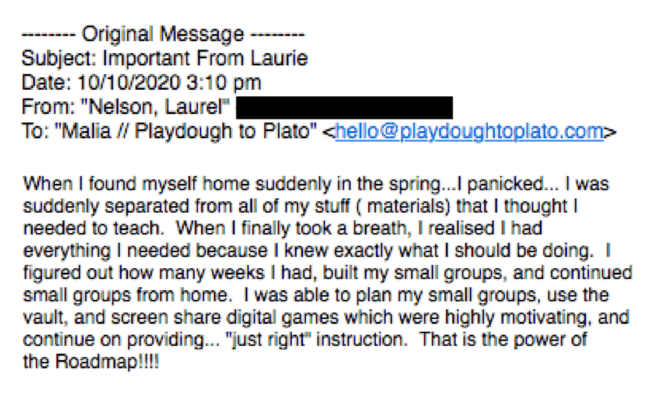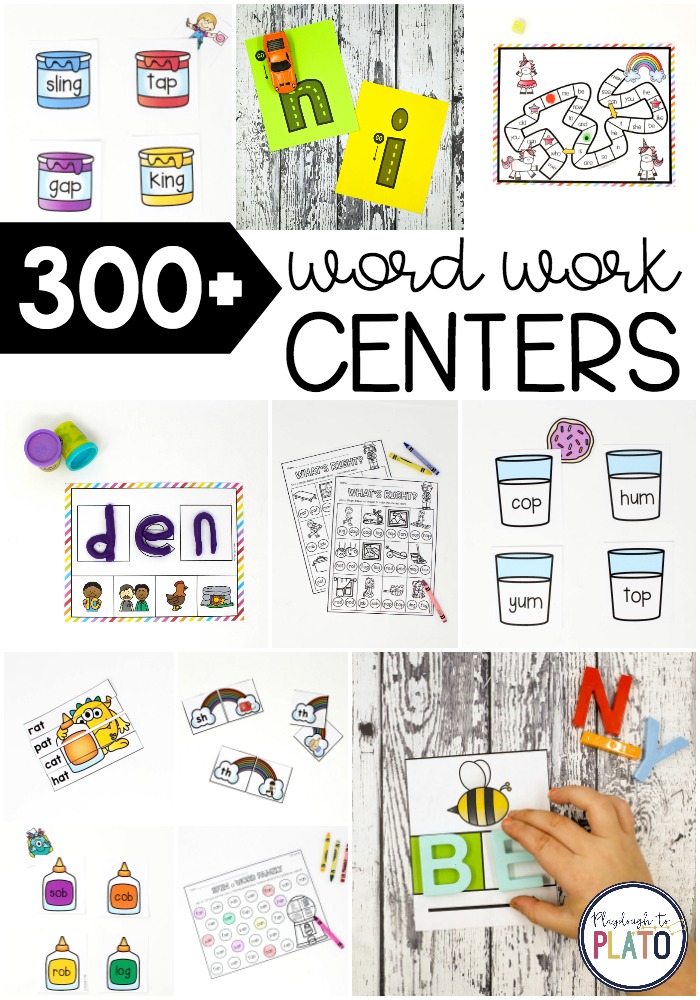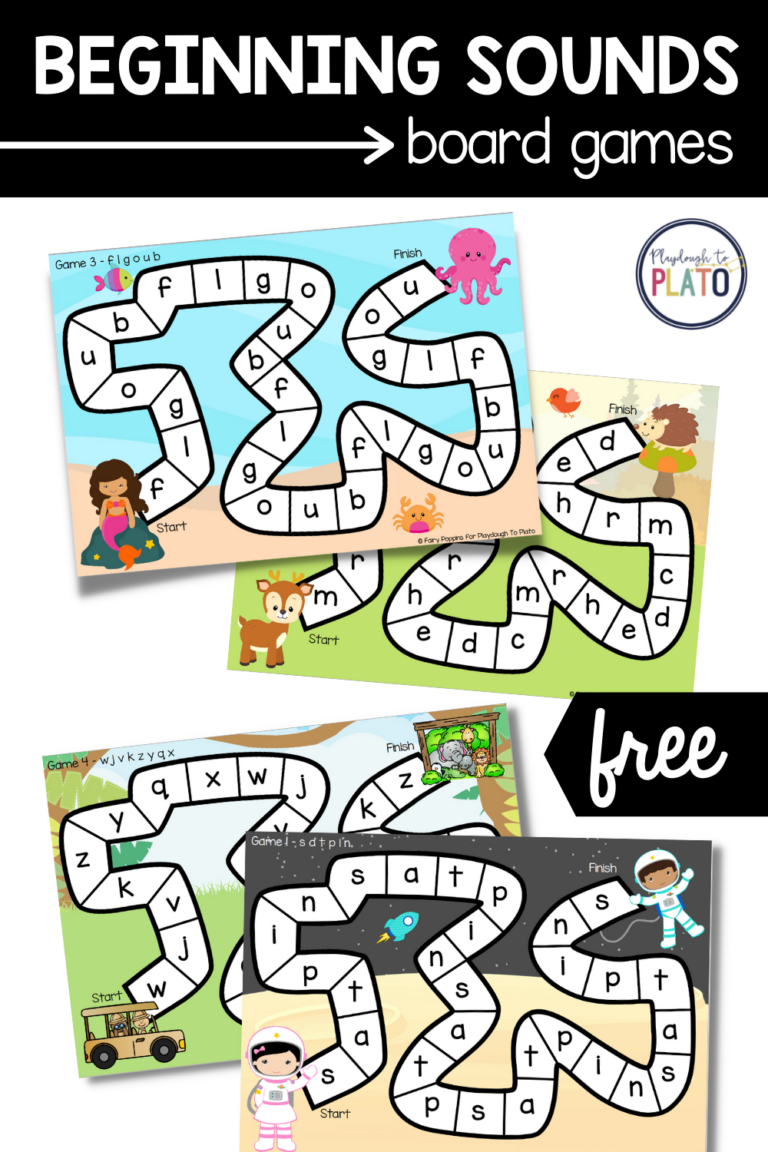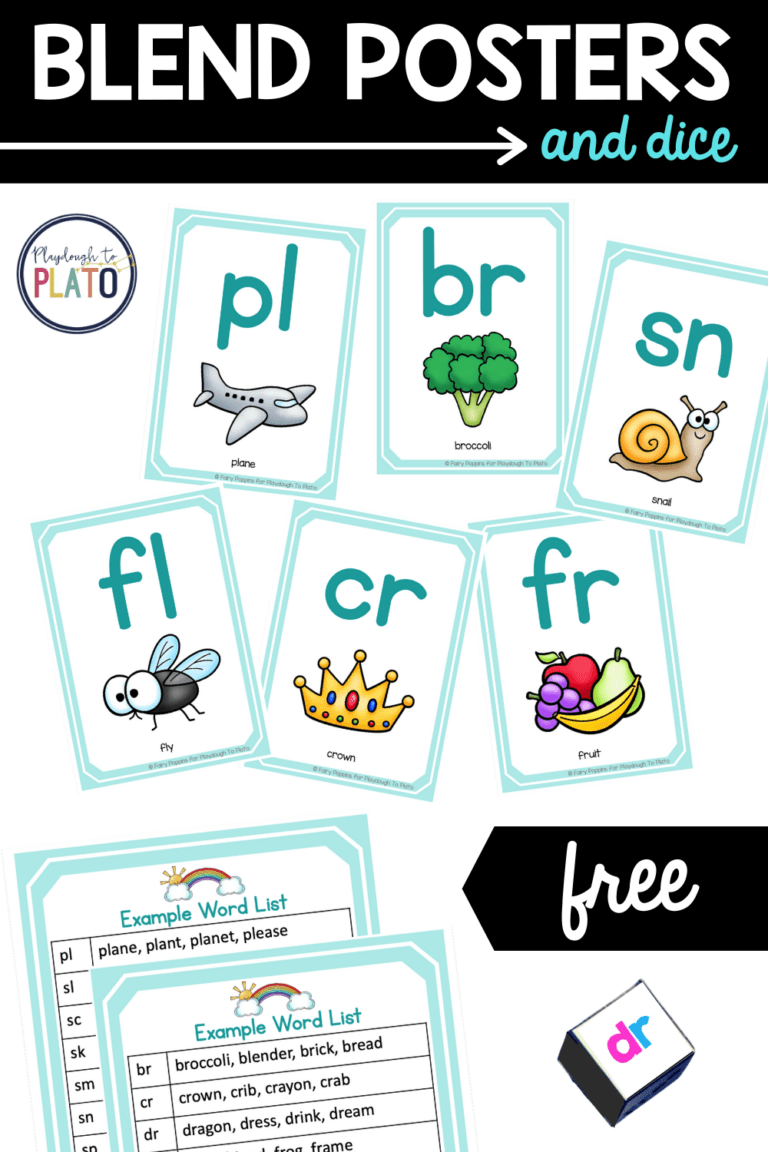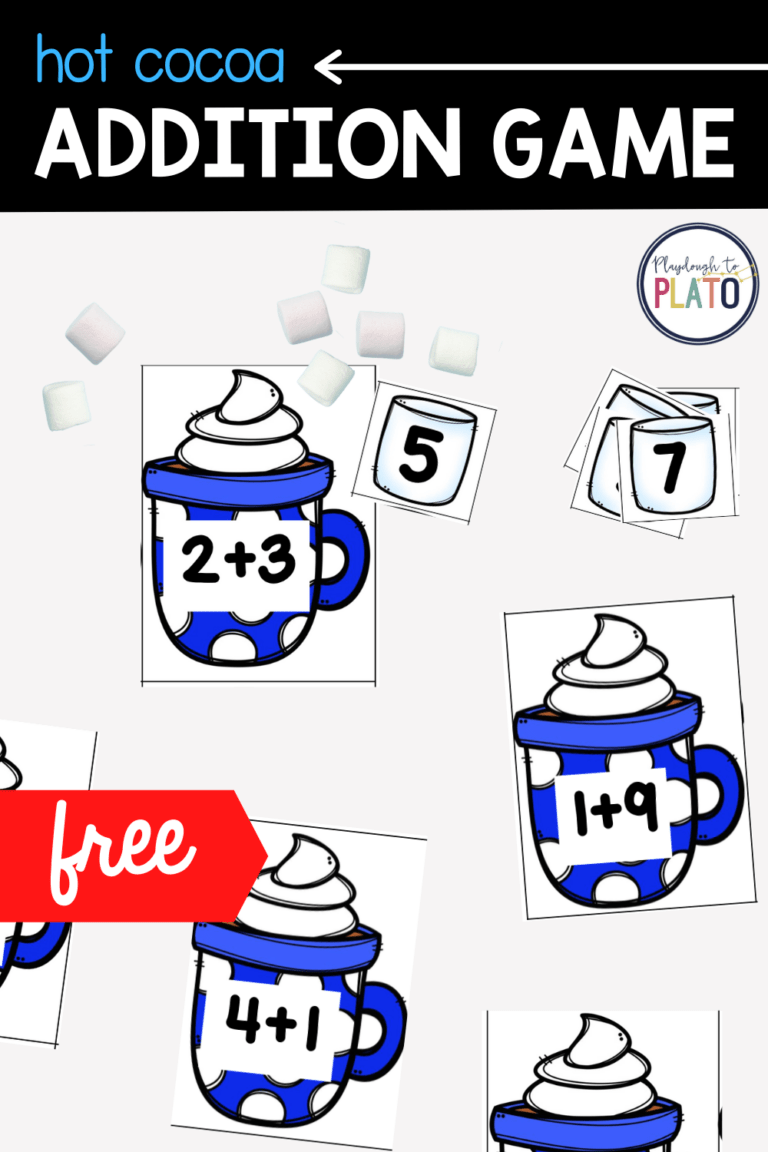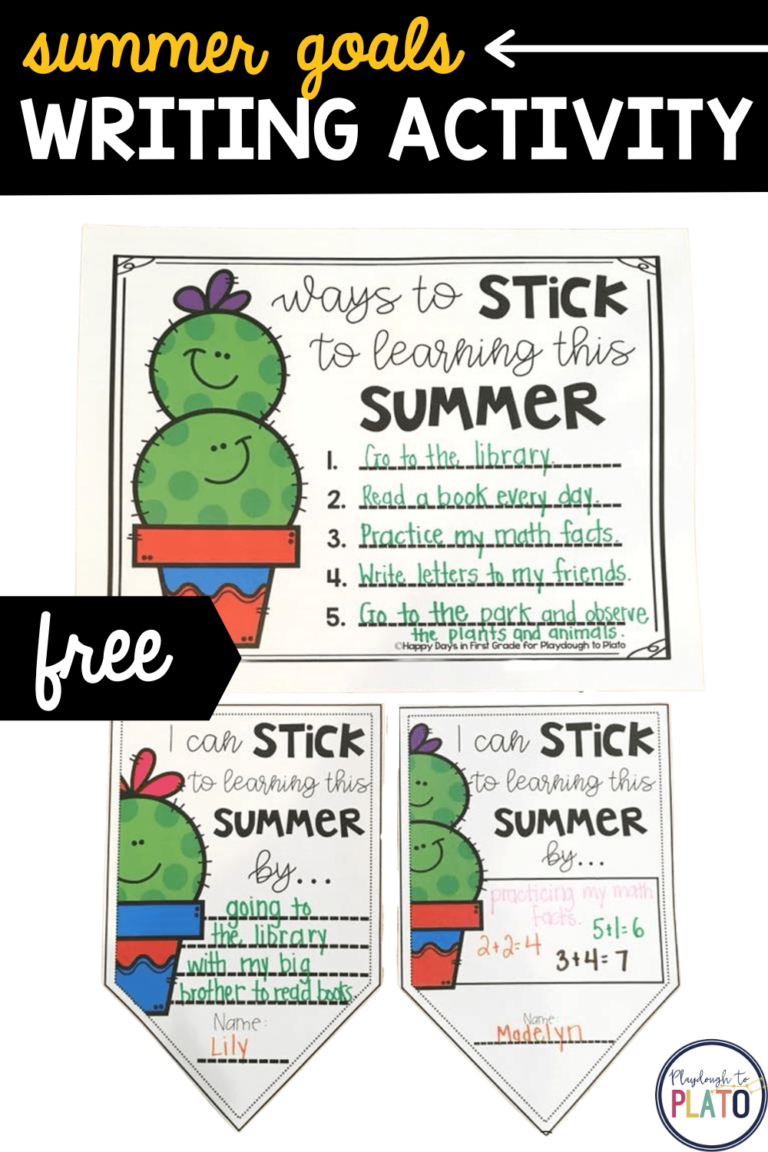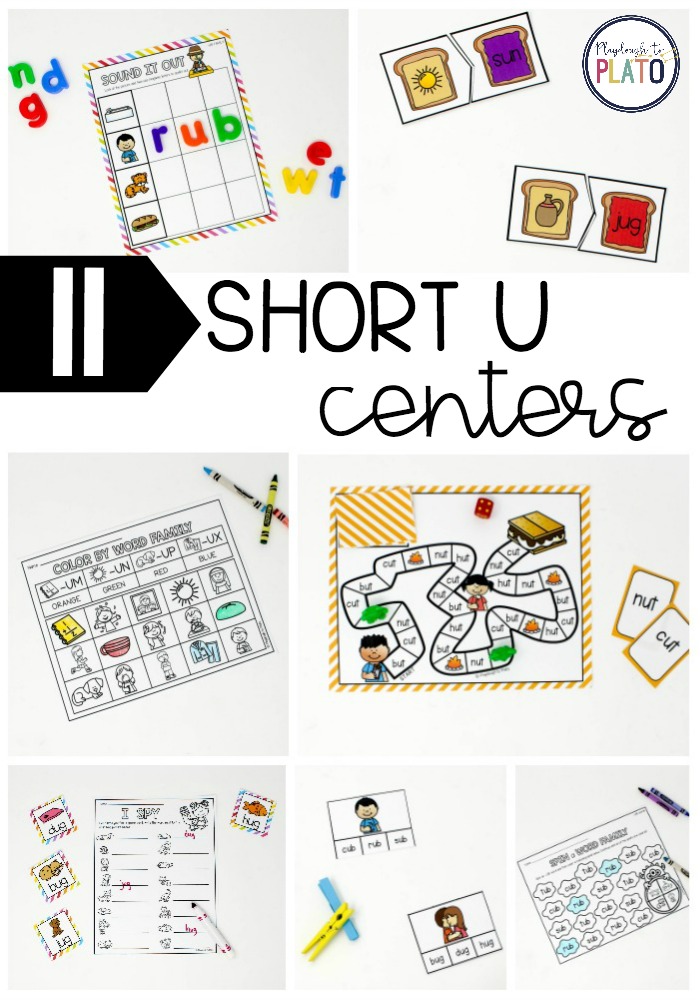When you think of teaching kids to read, you probably picture alphabet letters, little reader books and sight words…. lots and LOTS of sight words. But the truth is that what happens before you dive into phonics and sight words is key to skyrocketing students’ reading progress later.
Let’s dive into the 4 pre-reading skills to teach BEFORE reading and then request an invite to my 4 week course, The Reading Roadmap, so you can get my ready-to-deploy system for building rock solid readers.
Think of teaching reading like building a house… Phonics and sight words are the walls and roof – the part where everything starts to come together.
But the pre-reading skills are the foundation.
That’s where you create a rock solid base that makes everything else steady and strong. It’s where you teach students to hear different sounds so they can see them when they’re reading later. And it’s where you build their love of reading so that they’re actually motivated to practice it.
The 4 pre-reading skills are:
- Motivation
- Print Awareness
- Letter Recognition
- Phonological Awareness
What do those funny terms mean in “real world” language and how can you teach them to students? Let’s look at them more closely one by one…
Motivation
Motivation is up first! And let me tell you, this one is up at the top for a reason. It can truly make or break a child’s experience – and your teaching experience too. Children must be motivated to read before they will put in the effort to learn how to do it.
For many kids building motivation, means that they need to build confidence. Even as adults, we’re not always excited to try something new if we think we’re going to fail miserably at it…
Imagine if I invited you to race against the Olympic sprinting gold medalist.
Or I suggested that you play against the world champion chess master.
It doesn’t sound like a fun Sunday, does it?!
Many students feel the exact same way about reading. They don’t think they have a shot in the dark at being good at it so they can’t imagine putting in even an ounce more effort.
Thankfully, there are some really simple ways we can build students’ motivation if they don’t have it yet.
The first tip takes absolutely ZERO prep time. Not many teacher hacks can promise that, right?!
Rather than calling students by their actual names, start calling them “readers” instead.
For instance, “First grade readers, please line up at the door for lunch.”
Or, “Readers, it’s time to put our books away and get ready for recess.”
Or even, “Wow! You are such an amazing reader! You gathered so many clues about what the story might be about when you looked at that picture.”
Just like a meditation CD repeats the same mantra over and over again, you’ll be calling your students readers every chance you get so that they can internalize it and start believing it’s true.
Building confidence will naturally grow motivation too.
I share more simple but powerful tricks for building students’ motivation inside my 4 week teacher training, The Reading Roadmap, so make sure to join the waitlist if you’re interested in learning more.
Print Concepts
Moving on, skill #2 is print concepts which is just a fancy way of saying that kids need to know the basics of HOW to read.
Students should be able to point to the cover, show you how to turn a page when you finish reading the words, and hold the book so that it faces the correct direction.
Children should also understand that readers sound out words on a page by looking at letters, thinking about what sounds they make, and putting those sounds together to make words.
New readers don’t need to be able to actually sound out the word on their own, but they should grasp the concept.
To teach print awareness, I love to use a strategy called thinking out loud:
I pick just 1 or 2 skills to focus on. It might be reading left to right across the page or maybe it’s knowing the difference between a letter and a word…
Then I introduce a read aloud book to the class and explain that as I read, I’m going to be thinking out loud so they can hear what’s happening in my brain as I go along.
And that’s exactly what I do! As we read through the book, I think out loud and show the kids how I’m applying our focus skill while I read.
For example, if we’re working on pointing underneath each word, I talk about how my finger is moving along with the words as I read them.
Or if we’re talking about using picture clues to figure out what’s happening, I tell them what I think the story might be about when I’m looking at the illustrations.
(You’ll find a sample thinking out loud training video inside The Reading Roadmap!)
Thinking out loud is a really simple but incredibly effective way to build print awareness because students hear the step-by-step of what goes on in a strong readers’ brain.
Letter Recognition
Letter recognition is lucky #3 on our list!
Before children read, they can typically name some of the letters they see. For instance, “That is a B. That is an O.”
At this stage they don’t need to know EVERY letter they see but they should be able to name a handful to demonstrate they understand the concept of what a letter is.
There’s actually HUGE debate about whether to teach upper or lowercase letter first and whether to teach letter names or letter sounds first.
And, as you may have already noticed, many people feel VERY strongly about their opinions.
Carolyn, one of our Playdough to Plato readers, wrote in to say:
Many of my Kinders come to my class not knowing their alphabet letters and sounds. I currently start by teaching one letter and its sound per week, but this means it isn’t until around January that we are able to start sounding out CVC words. Is there a better or faster way to get students sounding out words? Also, I was taught to begin with teaching the alphabet letters by starting with consonants that have one sound and leaving vowels until last as they are the most challenging. What order do you suggest teaching alphabet sounds?
My solution? I teach both letter names and sounds at the same time!
I have a brain charging alphabet chant that I teach kids. (It’s one of the teaching tools you get inside The Reading Roadmap.)
Every day we learn 4 new letter names and sounds. Starting with A and moving along in ABC order, I teach my class the name of the letter, the sound it makes and a word that start with that sound.
So, for instance, we would say, “A is for apple /a/ /a/ /a/.
B is for baby /b/ /b/ /b/.”
Each letter has a little action movement we do as we say the words so the chant combines movement and sound so kids learn it really quickly.
Kids still need plenty of practice to apply it in their reading but it gives them a major power launch because they’re learning the upper AND lowercase version of each letter, the letter name and the letter sound all at the same time.
Phonological Awareness
Last but certainly not least on our list of skills kids need before they’re ready to read is phonological awareness.
If you’re scratching your head and secretly thinking that you still don’t quite understand what “phonological awareness” ACTUALLY means, don’t worry. You’re not alone.
But I have a trick!
When you’re on the phone – you HEAR someone talking to you, right? Now let’s apply that to our tricky vocabulary term…
Phonological awareness starts with the stem PHONE. So that reminds us that it has to do with hearing – just like you HEAR on the telephone. Phonological awareness means HEARING parts of words and moving them around.
There are actually five major phonological awareness skills:
- Rhyming
- Syllable segmenting
- Sentence segmenting
- Isolating phonemes
- Swapping phonemes
Rhyming is usually the first one that pops into people’s minds. Rhyming means words that end with the same sound like cat, hat and sat or dog, hog and bog.
Segmenting sentences is our next phonemic awareness skill. ”Segmenting” just means breaking into parts. So for this skill, kids need to break a sentence into words. For instance, if I said “The car is blue” a child would tell me that there are 4 parts: The, car, is, blue.
Similar to segmenting sentences, syllable segmenting means breaking something into pieces. But this time, instead of breaking up a sentence, kids are breaking apart a word. The word “elephant”, for example, has three parts: /el/ /e/ /phant/.
Isolating phonemes means hearing the individual sounds in words. For this skill, I might ask a child to tell me the first sound in the word dog which would be /d/. Or I might ask her to name the middle sound in the word cap which is /a/.
And finally, our last major phonemic awareness skill is swapping out phonemes. Since phonemes are the individual sounds in words, to practice swapping phonemes, I might ask a child to change the /c/ in “cat” to /b/ to make a new word. (Bat) Or I might say, “Change the /g/ in ”pig” to a /t/. (The new word would be pit.)
I know that’s a lot of parts packed into just one pre-reading skill! Thankfully, there are so many fun ways to boost students’ phonological awareness. I break down my favorites (and give you dozens and dozens of print-and-play centers that teach these skills!) inside The Reading Roadmap so make sure to join the waitlist if you’d like everything you need in one spot.
Get the Reading Roadmap
This is just the tip of the iceberg to the teaching training, tools and support waiting for you in my four work teacher training, The Reading Roadmap!
Inside the course, you’ll receive my time saving reading assessments, hundreds of print-and-play centers, step-by-step lesson plans and so much more.
Laurie, a Reading Roadmap alum, emailed me recently to say:
I’m so proud to give you access to the easy-to-use system that I know without a doubt will help you become a rockstar reading teacher.
Enrollment only opens up twice and year so be sure to join the waitlist so you’re the first to know when the next round kicks off!


